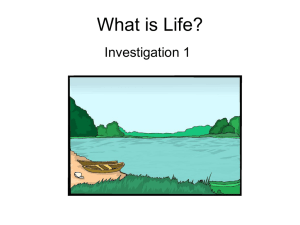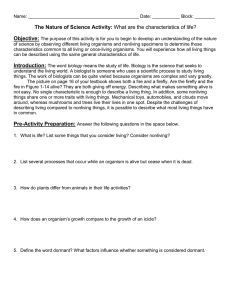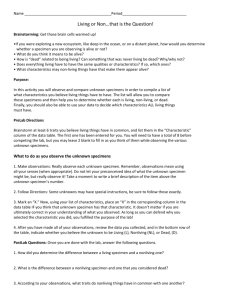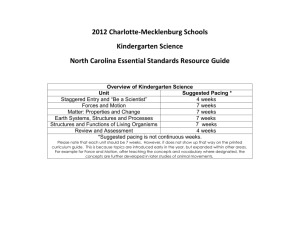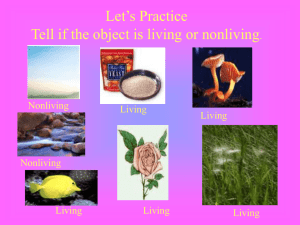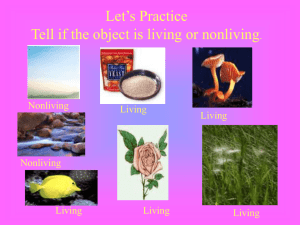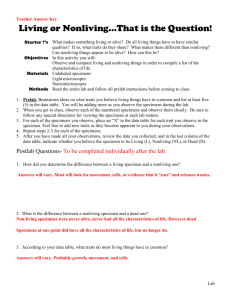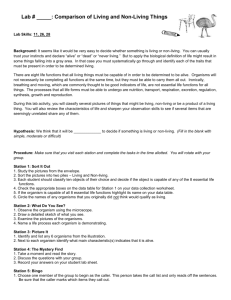Characteristics of Life Lab Worksheet
advertisement
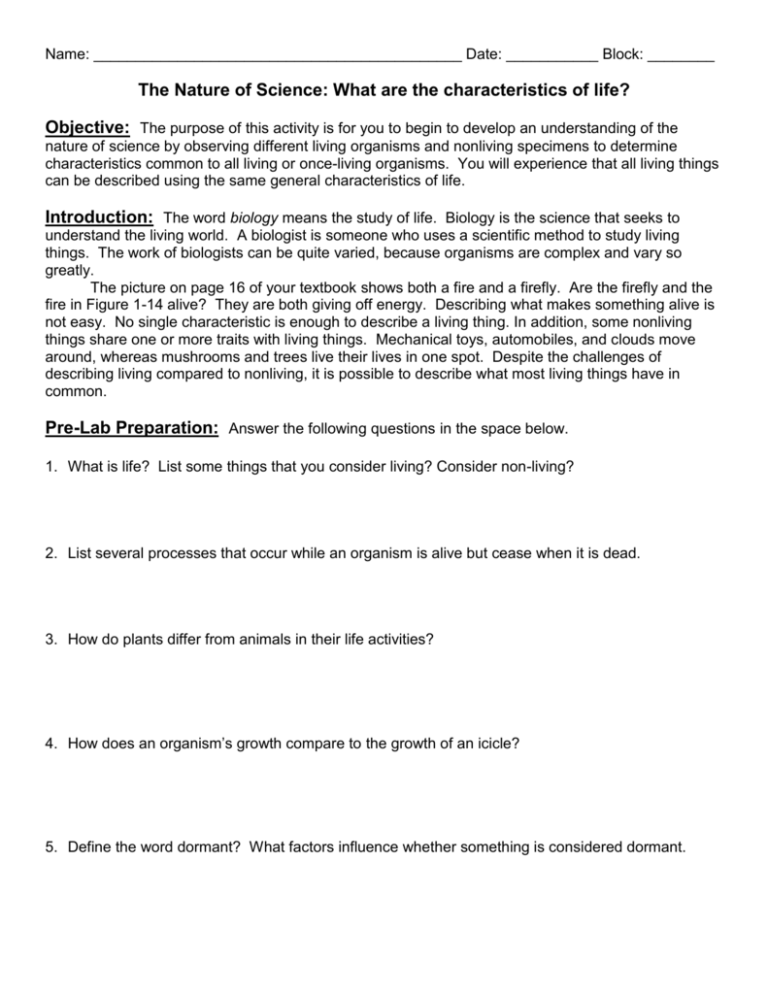
Name: ____________________________________________ Date: ___________ Block: ________ The Nature of Science: What are the characteristics of life? Objective: The purpose of this activity is for you to begin to develop an understanding of the nature of science by observing different living organisms and nonliving specimens to determine characteristics common to all living or once-living organisms. You will experience that all living things can be described using the same general characteristics of life. Introduction: The word biology means the study of life. Biology is the science that seeks to understand the living world. A biologist is someone who uses a scientific method to study living things. The work of biologists can be quite varied, because organisms are complex and vary so greatly. The picture on page 16 of your textbook shows both a fire and a firefly. Are the firefly and the fire in Figure 1-14 alive? They are both giving off energy. Describing what makes something alive is not easy. No single characteristic is enough to describe a living thing. In addition, some nonliving things share one or more traits with living things. Mechanical toys, automobiles, and clouds move around, whereas mushrooms and trees live their lives in one spot. Despite the challenges of describing living compared to nonliving, it is possible to describe what most living things have in common. Pre-Lab Preparation: Answer the following questions in the space below. 1. What is life? List some things that you consider living? Consider non-living? 2. List several processes that occur while an organism is alive but cease when it is dead. 3. How do plants differ from animals in their life activities? 4. How does an organism’s growth compare to the growth of an icicle? 5. Define the word dormant? What factors influence whether something is considered dormant. Procedures: A. Visit each of the stations in turn. First, look at the specimen without touching it. Examine its size, color, smell (if possible), and shape of the specimen. As you look at each specimen, ask yourself whether it is living or nonliving. B. Work with your team to make a list of what you know about each specimen and complete the data table below. Check whether the specimen you are looking at is considered living or nonliving and identify what life category you think applies to it on the line next to that checkbox. Life Categories: Specimen Alive Alive, but Dormant Dead (once alive) Product of a living organism Never Alive Check as Living or Nonliving and List the Life Category Living Nonliving 1. ם ם 2. ם ם 3. ם ם 4. ם ם 5. ם ם 6. ם ם 7. ם ם 8. ם ם 9. ם ם 10. ם ם List the Evidence used to identify the item as living or nonliving Post-Lab Analysis: 6. On your own list some of the characteristics that all living or once living organisms share in common. 7. Share data with another group and look to see if there are any consistencies in the data sheets? Are there any inconsistencies? Reevaluate your data sheet based off that information and list any changes you would make based off those discussions. Name: ____________________________________________ Date: ___________ Block: ________ Homework: Take notes on the characteristics of living things from section 1-3 in your textbook (pages 16-19). Table 1: Characteristics of Living Organisms Characteristic Key points and vocabulary Further Analysis: Answer the following questions in the space provided. 8. What was the most surprising observation that you yourself missed? 9. What functions or processes (characteristics of life) were you not able to observe for some specimens? Can you think of a way to obtain this information? 10. What would be the consequence to an organism if its homeostasis is disrupted and not restored? Use an example to explain your answer. 11. What extra experiments would you perform to resolve any questions about whether a specimen is living? Full Lab Write Up: Name: Partners: Title of the Lab: Objective: Conclusion: Answer the following bullets in paragraph form on a separate sheet of paper. The first samples of the moon’s surface to be brought back by Apollo astronauts were carefully examined for signs of life. What sort of evidence do you think scientists looked for and how did they go about obtaining that information? Were there any signs of life? Explain why a Venus flytrap is considered living using the following characteristics of life: Using Energy, Growth & Development and Evolution (adaptation). Why is it so hard to define viruses as living or nonliving?
